August 9th, 2017
This is the fourth in a series of articles targeted towards potential home buyers looking at building a custom home and the topics or questions they might face. Read the last article about Selecting a Custom Home Lot in Tucson – Part Two. While these articles will focus on the typical issues of building a custom home in the Tucson, Arizona metropolitan area, many of the issues may well be similar throughout the state and other parts of the country.
As we discussed in parts 1 & 2 of the Choosing a Custom Home Lot articles, seeking the assistance of an architect and builder can pay dividends during the lot selection process. Engaging with these professionals at this time also allows you to communicate frequently enough to help determine if you’d feel comfortable hiring them for the rest of the build process. A good working relationship is critical to the success of your custom home. Not only will the process be much more fun and devoid of extra stress if you get along well with these professionals, but the costs can be lower and the time it takes to complete the home can be less.
Hiring an Architect
First, it’s worth noting that those buyers who are looking at a mid-range price point may not utilize an architect at all. Hiring an architect can be an expensive proposition for a truly one-off custom home. These buyers will frequently find an “off the shelf” plan that’s been previously designed or built which will be much more price effective. Others may find a builder who possesses floor plans that suit their liking to save on costs. These plans can also be modified by a draftsman, who can also design a full home too for a less expensive price than a well known architect.
Prices for an architect will of course vary based on the size of the home you’re building, market conditions, the availability of the architect, time spent on the project, and the portfolio or prestige of that architect. However, it’s not uncommon for a one-off custom home design to run upwards of $60,000 for a completed set of construction drawings. An architect at this level will also work closely with your builder throughout the project to ensure everything goes smoothly and any needed modifications are addressed. Architects in this realm will assist with the initial home design, landscape design, HOA design requirements if applicable, and often will partner with an interior designer too. There often is some overlap in the duties of the architect, builder, and interior designer, so it’s a good idea to make sure the professionals you choose have a good working relationship with each other. Asking how many homes they’ve worked on together before is a good idea and speaking with their past clients can also reveal useful information.
Some of the most prominent Tucson architects are Marc Soloway, Ron Robinette, and Kevin Howard. These architects have designed countless homes in premier custom home neighborhoods like Stone Canyon, Pima Canyon, and Canyon Pass. In the last ten years or so Marc Soloway has stood out as the most prolific architect in Northwest Tucson especially. Many other architects of course are available in Tucson too, but these three have exemplary portfolios that span many different styles from contemporary & modern to Spanish & Mediterranean.
Again, it can’t be overstated that regardless of who a buyer chooses it ought to be someone who they feel comfortable communicating with so the end result matches a buyer’s desires. A high level architect can bring exceptional ideas to the table and translate a buyer’s vision into a reality that’s also highly functional. A good architect will consider the lot’s characteristics and make sure to work around the natural topography while maximizing views at every opportunity.
Hiring a Builder
While buyers may or may not use an architect, nearly each and every one will hire a builder. Just as with the architect, it’s vitally important that you have excellent communication with your builder. Countless hours will be spent throughout the design and build process with the builder so make sure you have complementary personality types. Ultimately you want someone who you feel is extremely trustworthy and reliable. For nearly every buyer, quality construction is the number one priority when going through the custom home process.
Therefore, when interviewing builders make sure to ask who they use for their subcontractors and how long they’ve used them for. While of course circumstances can force occasional changes, many of the best builders maintain the same tradesman for many, many years. This may mean that builder isn’t the least expensive option, but they’ll tend to have more control over the final product when it’s a familiar subcontractor doing the work. Builders who constantly bid projects to get the lowest cost may end up with a subcontractor who has less experienced tradesmen or who are more prone to cut corners. Unfortunately in Tucson there can be at times a lack of skilled tradesman who really are artisans at their craft.
Similar to the process of hiring an architect, it’s a great idea to speak with a builder’s past clients if possible to find out their experience with that builder. An expert builder is a craftsman who knows the business inside and out and doesn’t sacrifice quality. Some builders themselves aren’t skilled craftsmen and instead are more schedulers and sales personnel. Finding a builder with exceptional building techniques and industry knowledge is crucial. You can also check a builder’s record with the Registrar of Contractors to inquire about whether any complaints have been filed against them. As with any business don’t necessarily take a complaint as a sign of a poor builder since we all have experienced unreasonable customers too, but at least take the time to investigate the issue to your satisfaction.
One thing to be very cognizant of when speaking with a builder is the quoted price. All too frequently we’ve heard stories about buyers who are told by a builder that a project will cost a lower amount, knowing full well it will exceed this amount, simply to get the buyers to sign a contract. Even when they add in a contingency fund for overages it’s not uncommon for the final amount to exceed this total number. In fact, we’ve had buyers who’ve unfortunately stopped during the design process because costs have gotten too out of control, and they ended up selling their lots and buying a resale home instead. Be wary of things that sound too good to be true! The most reputable builders may not be the least expensive but honesty goes a long way! It’s those individuals who you want to align yourselves with to receive a premium home.
Team Woodall currently represents John Herder Building at The Estates at Tortolita Preserve project near Dove Mountain in Marana. John exemplifies the best qualities sought after in a builder including his honesty and integrity. As a fourth generation builder with extensive knowledge & experience, John is a craftsman who prides himself on superb quality. John utilizes many proprietary techniques in constructing a home and has built relationships with the best trades in the industry who’ve worked with him for the last 20 years. This close relationship allows John to seek the highest quality from these other trades while maintaining a competitive price for his clients. Unlike some builders, Herder Building’s quoted prices aren’t a bait and switch game to get a contract and then increase the price. While this may cost him the occasional project when buyers are looking for the absolute lowest quoted prices, John simply does business the right way. His easygoing demeanor also makes it a pleasure doing business with him.
Another aspect of choosing a builder that demands mentioning is their warranty and service after completion. This is another area where John Herder excels offering a wall to wall two year warranty on his Tortolita Preserve builds. When potential customers ask him if he offers a 10-year structural warranty like other builders, John simply responds that he stands behind the structural integrity of his homes for life. Read the details of any builder’s offered warranty to see about exclusions as many are more smoke & mirrors than anything else. A truly reputable builder will not be afraid to stand behind their product.
As with the rest of the custom home building process Team Woodall is here to assist our clients in this process of selecting an architect and builder. Ultimately it’s most important though to find professionals who YOU feel comfortable with and can communicate effectively with for many months. Even the best builder in the country isn’t the right choice for your home if you can’t communicate well together as the process will become frustrating and stressful.
Next up in our series of articles on custom home building will be: Wells & Water Issues.
August 1st, 2017 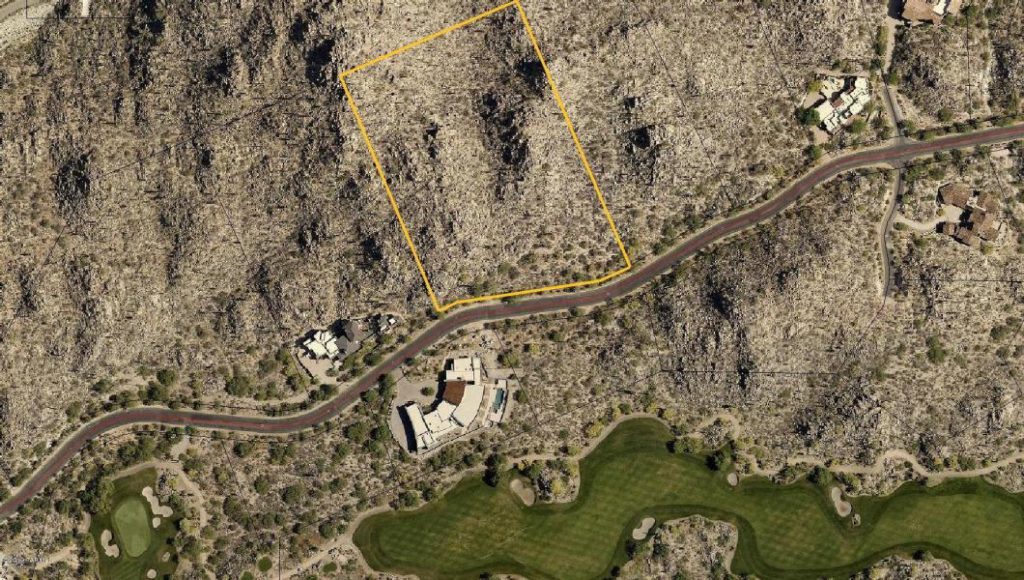
This is the third in a series of articles targeted towards potential home buyers looking at building a custom home and the topics or questions they might face. Read the second article about Selecting a Custom Home Lot – Part One. While these articles will focus on the typical issues of building a custom home in the Tucson, Arizona metropolitan area, many of the issues may well be similar throughout the state and other parts of the country.
Part One of Selecting a Custom Home Lot was originally meant to offer a brief description of all the main considerations when selecting a custom homesite in one article. However, even when trying to keep the description of each point brief it quickly became evident that the post was simply getting a bit too long. That just goes to show how many considerations there are to consider when buyer a custom lot. Here are some more…
The Availability of Utilities Varies
When that seemingly perfect lot comes along don’t forget to check the basics! Unlike production home subdivisions which almost always have all utilities to them, custom home lots many times don’t have all utilities on site. Electricity is almost always present unless you’re talking about a really remote area. In those rare cases in which it’s not to the lot line you’ll want to consider the feasibility & expense of running it from the nearest access point. Tucson Electric Power Company usually provides a 500 foot line extension allowance from an existing facility of proper voltage at no charge if the proper access and/or easements are available and in place.
Take note that our Tucson MLS detail sheets for lots have a specific category for the distance to various utilities so this is a good starting point for getting utility information. However, while these detail sheets are accurate in most cases, the information is NOT guaranteed (as it says at the bottom in the fine print). Therefore it’s worthwhile as a buyer to verify all of the information contained within the MLS listing, even by calling the utility companies themselves.
Phone connections are another fairly common utility that many lots will have access to at the lot line. It’s pretty rare to come across a lot in greater Tucson that doesn’t have phone availability. Cable on the other hand is quite a bit more hit and miss. While most custom home subdivisions provide access, many of the outlying area lots do not. Cable has become a bigger issue to most people in our digital age primarily for its high speed internet access. While DSL can be sourced from phone companies or through satellite, the speeds of these services (keeping in mind that outlying areas are on older phone line systems which don’t typically support the highest DSL speeds) fall short of high speed cable. Satellite TV via Dish or Direct TV is usually sufficient for most television needs, and cell phones largely have replaced home phones so it’s the Internet that’s the biggest concern of our clients. One additional note for cell phones though is be sure to test your reception at these lots, particularly if you’re looking in an outlying area or around mountains and canyons.
Water and sewer connections are the two other utilities that many lots in outlying areas may not have to the lot line. Each of these topics will receive their own individual articles so we’ll keep it brief here. Water is obviously an important issue and one that especially in the Southwest is always a hot topic. Some custom lots are on wells (whether private or shared), but not every well produces sufficient water either. We’ve run across numerous lots where owners have had to truck in water, at least occasionally. That can get expensive and is quite inconvenient too. Drilling for a well is also something that can be very expensive.
In contrast to water, sewer connections aren’t quite as big of an issue. While a sewer connection is certainly the preference for most buyers, septic and alternative systems do exist at a fairly reasonable cost. Of all the major utilities sewer is probably the least common to not be at a lot line, so you’ll find many lots on septic. This is especially true once again for outlying lots but also for more central lots that have more acreage. Even some developer built subdivisions will omit sewer if they’re on larger lots because the expense is pretty substantial for a developer when a suitable, fairly inexpensive alternative exists with septic.
Don’t Get Washed Away – Knowing Flood Plains
Another consideration when looking at vacant land, just like in homes, is to consider drainage issues and flood plains in particular. Listings often have categories listing whether a property is within a flood plain but as the disclaimer at the bottom says, information is deemed accurate but not guaranteed. Verify this information yourself! Having a wash or flood plain on part of the property may not be too problematic or a deal breaker. Simply determine if the property will need flood insurance, which can be expensive at times, and know that legislation regarding the cost or flood plain boundaries can change. While FEMA flood plains are what people most commonly check out, there may also be local flood plains that are worth investigating too. More common than flood plains are washes on a property which may have areas deemed 100-year flood prone. Again, these aren’t at all automatic deal killers but can impact where a home will be built. Sometimes these 100-year flood areas can be re-routed, but check with local municipalities in conjunction with a builder/architect to make this determination. While Tucson is often very dry for most of the year, it’s amazing how quickly water can accumulate in some washes during monsoon season if a heavy rain comes through.
Public Reports Can Be a Wealth of Information
Developers in the State of Arizona are required to file a “Public Report” that contains information deemed important to disclose to prospective buyers by the Department of Real Estate. A developer, or subdivider, in this context is anyone who offers for sale six or more lots in a subdivision. The buyer who’s making an offer on a property will have to sign a receipt of this public report as a condition of the sale. This public report is essentially in lieu of a Seller Property Disclosure Statement (SPDS) that would typically be provided to a buyer on a resale home or lot. Just like a SPDS though, keep in mind that a buyer should verify the information in the public report for accuracy. The Department of Real Estate doesn’t verify the information provided by a subdivider and sometimes the information is simply out of date. While the seller should provide the public report, they are also available for review online at the Arizona Department of Real Estate’s website here: Public Report Database Search.
Among the many topics covered in the public report are:
- Flooding and drainage disclosure
- A description of adjacent land and uses
- Who provides electricity, telephone, gas, water, and sewage disposal
- Common community and recreation facilities
- Assurances for completion of improvements
- Local services and facilities, including schools, shopping facilities, public transportation, medical facilities, fire protection, ambulance service, police protection, and garbage services
- Taxes and assessments (keep in mind property taxes on vacant land increase after a home is built. It’s a good idea to check other homes within a community to see their taxes for a general comparison of what they could become.)
- Property owners’ association details
Affidavits of Disclosure
When a property is located in an unincorporated area of a county, other than subdivided land, and the seller owns five or fewer parcels, an Affidavit of Disclosure will be required to be provided to a buyer at least seven days before the transfer of property. This is another instrument similar to the public report providing various disclosures to the buyer. Upon receipt of the Affidavit of Disclosure a buyer has five days to review and rescind the transaction if they disapprove of any information provided. Among the topics covered in the Affidavit of Disclosure are:
- Is there legal & physical access to the property
- Who is responsible for maintenance of the roads and if a maintenance agreement is in place
- If the property is within a FEMA designated floodplain
- What utilities are available to the property, including water/well info & sewer/septic info
- If the property is located in the vicinity of an airport or military airport
Buyer Advisory – A MUST Read
All buyers of either vacant land or homes in Arizona should absolutely utilize the Buyer Advisory that’s available from the Arizona Association of Realtors and Arizona Department of Real Estate. While all of the items listed in the buyer advisory may not be applicable to land, there are great links to a wide variety of resources to investigate a property. Please look carefully at this document at least during an inspection period of a property, if not before making an offer, to look up any information that’s important to you.
Price/Market Trend/Offer Considerations
Finally, do your research on comparable sales around the parcel that you’re looking at. No two properties are the same, but getting an idea of other sales that have occurred of reasonable similar properties is crucial to understanding what a fair market value is for the land you’re looking to purchase. Then you can make some reasonable adjustments for either superior or inferior views, size, usable space, and other amenities of the lot. Also knowing the recent trends for land sales can determine whether you’re in a buyer or seller market and how many lots are currently available.
As of this writing in Tucson for instance there is an overabundance of lots on the market and relatively weak demand, creating higher months of inventory on the market. This creates a buyer’s market where a list price may be more flexible. Now if a lot has already been substantially reduced or is in a specific area that has limited supply this may not hold true. Likewise, if a property is just incredibly desirable it could go more quickly and be less prone to price flexibility. All of this is something that Team Woodall can help you determine before making an offer. Consider at the very least also asking for a boundary survey or full ALTA survey in the offer terms to determine the boundaries and suitability of the lot for your building needs. Having an agent who’s intimately familiar again with the different vacant land contract is crucial to a successful offer and purchase.
Next up in our series of articles on custom home building will be: Hiring an Architect & Builder.
July 25th, 2017  Photo by Stephen Woodall of a Stone Canyon custom lot listed by Team Woodall which is currently under contract. This is the second in a series of articles targeted towards potential home buyers looking at building a custom home and the topics or questions they might face. Read the first article about the Pros & Cons of Building a Custom Home in Tucson. While these articles will focus on the typical issues of building a custom home in the Tucson, Arizona, metropolitan area, many of the issues may well be similar throughout the state and other parts of the country.
Now that you’ve made the decision to pursue a custom home, the next step is to begin shopping for lots. It’s worth noting that while all real estate agents have the capability to represent a buyer when purchasing a lot, the vast majority of agents have little to no experience with land. Having an agent who’s knowledgeable about all the many factors that go into a lot purchase, including the basics of the different purchase contract, is extremely important to successfully buying a custom lot. Any agent without experience in vacant land is simply working outside their area of expertise.
Thankfully Team Woodall has represented many Sellers & Buyers of vacant land in the past and we’re ready to help you get started exploring all of these topics below!
Location, Location, Location
Location is always a prime factor in all real estate purchases, and buying a lot is no different. First, determining which area(s) of town you’re most interested in will help guide the search process. Consider all factors like existing services (grocery stores, medical offices, entertainment venues), the proximity to your work or schools, and how well it fits into your particular lifestyle.
Next, within a general geographic location what type of community are you after? A rural setting on the outskirts of town? A gated golf community? A more central location? What zoning do you need to fit your use of the property? Do you want (or not want) a homeowners association?
While homeowners associations are often a positive factor in sustaining property values and design standards, recently HOA rule changes have impacted a couple of custom lot communities in the Tucson area. Both the Skyline and Stone Canyon communities had changes occur which necessitated either existing or future property owners to join their social/sports/golf clubs.
By the very nature of growth within towns there are commonly fewer vacant lots the closer you are to town and a wider selection of lots the further removed from town you get. Within central Tucson or even the lower Foothills area, there are not too many lots left and those that remain might be there because of challenging build circumstances or another issue that reduces its desirability. Where lots are scare, prices commonly increase.
Location means more than just an area of town, neighborhood, or street. It refers specifically to that exact piece of land. While not always the case, lots that are side by side can have vastly different characteristics. During the search process it’s vital to WALK ONTO THE LOTS! Looking at a lot from within a car on the nearby road doesn’t accurately give you the full scope of whether a lot is good or bad for your needs. Take the time and effort to step over cactus, scoot past that rattlesnake, and deal with the high heat to scour the entire lot if it looks promising from the street.
What Do You Mean My View is Getting Blocked by that Shopping Mall?
When looking to buy a lot for a custom home, one of the top priorities for most buyers is the view. Some homeowners prefer a sweeping vista of twinkling city lights, others want an expansive view of the Catalina Mountains (or Tortolita/Rincon/Tucson), and some don’t have a real preference or need anything spectacular. The privacy afforded by a lot has increasingly become an even more important topic for our clients lately. Finding a lot that doesn’t have neighbors looking into your backyard or other high traffic areas might be a high priority.
Available custom home lots often are grouped together in areas that are still under development. It’s crucial that you look beyond the boundaries of the lot itself to see how other neighboring parcels might affect your views, privacy, nearby traffic, or enjoyment of your home in the future. A lot that is surrounded by existing homes makes it easier to see these likely impacts. However, if there are adjacent vacant properties you’d want to look closely to see how and where a structure built on that nearby land is likely to impact yours.
It’s a buyer’s responsibility to do their due diligence to determine what the future may hold. As agents Team Woodall helps our clients in that process and provides tools for you to make these discoveries, but ultimately the burden sits squarely on the shoulders of the buyer. Only you know how important certain factors are to your enjoyment. One extremely helpful resource in the Tucson area is the Pima County GIS Parcel Search. Look up any address or parcel number and you will have links to a lot of relevant information about that property, including a map with all kinds of useful information that can be overlaid.
Zoning of neighboring properties is also worth investigating. This might help you discover what a current or future owner might have on their land (livestock waking you up at 5:00am may not be what you want as a daily alarm clock) or what the density of a larger undeveloped parcel will be.
While checking on the zoning is worthwhile, it’s not foolproof either. Keep in mind that just because neighboring land might have a certain type of existing zoning doesn’t mean it can’t change in the future. Looking at the likelihood of development nearby and what shape that’s going to take is vital to your enjoyment of the property and its future value. You probably don’t want that vacant land next door which you currently enjoy as open space to turn into a regional shopping mall in two years.
Topography Impacts Build Costs
Finding a lot with really unique topography like boulders can make for a gorgeous setting but may very well impact building costs. Flat lots are generally much easier and therefore more cost efficient for those on a budget. Additionally, if a buyer is very budget conscious a flat, open lot should allow an off the shelf floor plan to work in many cases. A hilly lot by contrast may require additional time (and expense) by an architect to create a suitable layout that incorporates the more rolling topography. Lots that are sloped and needing substantial grading, cutting, or fill can quickly add expense once construction starts too. Lots which sit up on hillsides and offer great views are more commonly those needing much more site preparation.
Site preparation is one of those costs in custom home building that can be difficult to estimate, even for the most experienced builder. This is especially true if any land needs to be cut into since rocky terrain and hard soil often can’t be fully determined until you start digging. Even sample drilling won’t guarantee that a vein of rock doesn’t lie just beneath the surface.
In an upcoming article we will talk specifically about choosing an architect and/or builder, but having one of each at the very least as a resource during the lot search process can be incredibly beneficial. Buyers looking to use an architect can benefit from the architect’s vision and creativity to incorporate a lot’s varied topography directly into the design. That rock outcropping or saguaro may make a perfect centerpiece for a courtyard for instance. Builders additionally can help in the selection process by providing an idea of costs necessary to get a site pad built. Using a local architect and builder who are experienced with our Tucson topography can pay real dividends.
Next up in our series of articles on custom home building will be: Choosing a Custom Home Lot, pt. 2. Topics touched on will include: utilities, public reports & affidavits of disclosure, pricing, market trends, and offer considerations.
July 18th, 2017
This is the first in a series of articles targeted towards potential home buyers looking at building a custom home and the topics or questions they might face. While these articles will focus on the typical issues of building a custom home in the Tucson, Arizona metropolitan area, many of the issues may well be similar throughout the state and other parts of the country.
The majority of homes built in the Tucson area over the last 20 years are based on floor plans built over and over again by either smaller local/regional builders or large national builders. These production or “tract” homes offer proven designs that fit a wide variety of buyer needs and can be built more cost effectively due to the savings achieved by building in volume.
Custom When You Can’t Find Your Ideal Resale Home
Not all buyers want a production style home though, especially those “moving up” into a larger house, and therefore some might consider a more custom style residence. Typically these buyers will begin by looking at the existing resale inventory to see if a suitable property might already be out there for sale. Purchasing a resale home saves time when compared with building a custom home and, most often, is less expensive too.
When the right home doesn’t exist already, buyers may want to consider building their own custom home. The main benefit of building your own home is having the opportunity to design it in such a way that fits most or all of your needs (when your budget allows)! Buyers can choose their own floor plan, style, finishes, and more. One quick reality check here is that rarely does the finished product achieve perfection, even for those who’ve built custom homes before and don’t have budgetary restraints. There are usually some “we should have done this differently” moments, but a conscientious buyer should be extremely happy still at the end of the process.
It Takes Time to Design and Build a Custom Home
The downside of the freedom to make all these decisions in creating your home is that it’s very time intensive. If a buyer works with an architect for a truly custom home, that initial design phase will usually take around six months to get working construction drawings completed. If there’s excellent communication between the client & architect and swift decisions are reached this can be reduced somewhat, but it’s also possible to take up to a year too.
Some buyers choose to purchase an “off the shelf” plan that already exists which does save time (in architect fees) and money. Then the real time intensive part of selecting cabinets, flooring, countertops, lighting, driveway material, landscaping, etc. with a builder begins. For those buyers who are married or have a significant other involved, this process can become even more time consuming if the two parties aren’t on the same page. Suffice it to say that the custom home project will take quite a bit of time & effort.
Financial Implications of a Custom Build
One thing that’s less common in the market today than it was say 20 years ago are the mid-range price point custom homes. These homes which you’ll find all over the Foothills of Tucson for instance, aren’t often being constructed today. While it can be feasible to build one still, the rising cost of land, building materials, and permitting fees has pushed most custom homes into the luxury category. The mid-price point, budget conscious buyer has almost been forced out of the custom market today. However, if you’re in this market contact Team Woodall and we’ll help guide you towards making this a reality.
Another consideration to give thought to when debating a build is that while you can make the home very specific to your tastes, that very commonly means it will be less appealing to others when re-selling the home down the road. After all, isn’t one of the reasons you’re considering a new build because a suitable resale home didn’t exist?
Much of the decision about whether to buy or build comes down to the time you are able to commit to a project and how exact to your liking you need the home to be. The satisfaction of building your own home precisely to your liking can be very rewarding. Just make sure you’re aware of the time commitment in the design phase and the length of time it will take for the project to be completed. We’ll talk about it more in later articles in this series, but also be ready with an overage contingency fund as more often than not changes you make during the construction phase will push the price higher than anticipated.
If you’re considering a custom build please feel free to reach out to Team Woodall and we can provide even more detail that should prove useful in your decision of whether to go the custom home build route.
Pros:
- Purposely designed and built for your needs & to your styling tastes
- The opportunity to put a home that you like on a lot that also suits your personal desires
- Fewer compromises made when buying a home
Cons:
- Very time consuming process that can take longer to get into
- Typically more expensive
- Financing options are more limited
Next up in our series of articles on custom home building will be: Choosing a Custom Lot in Tucson, pt. 1.
July 13th, 2017
The summer heat came upon Tucson quickly in June, and now as we’ve moved into July, the monsoons have finally arrived, adding humidity to the mix. This is the time of year when air conditioning systems are put to the test. If a failure is going to occur it’s most commonly going to happen during these hottest months. Thankfully with a Long Advantage card, those needing service or repair can get a discount through D&H Air Conditioning.
If you don’t have a Long Advantage card please just contact Team Woodall, and we will gladly provide one for you.
Even though D&H does a fantastic job with their diagnostics and repair, handling an AC issue on your own can save you big bucks if you’re handy! Often one of the first components to fail on AC units is the capacitor for the compressor or fan motor. Capacitors are essentially short term batteries that either send a jolt of energy enabling the motor to start up (start capacitor) or provide additional current to a motor while it’s running (run capacitor) to optimize torque and performance efficiency. There are a variety of AC unit styles and different capacitor types (single/dual) and ratings to operate these different units. Capacitors are typically very inexpensive ($7-$30) parts that with a little research into your specific system can be replaced by a handy homeowner.
A note of caution should be interjected here that capacitors are part of the electrical system so caution should always be observed if attempting any diagnosis or repair. Additionally, capacitors contain chemicals that can be harmful if leaking so proper handling is also required.
Less than two weeks ago the AC unit on my rental property stopped functioning due to the fan motor burning up, which is a common result of a faulty capacitor. With a little research online I was able to find a motor with the appropriate specifications and install it along with a new capacitor. This DIY repair saved me literally hundreds of dollars and I was able to get the AC functioning again for the tenant. Working in the attic was a sweaty undertaking in the summer heat, but an online investigation saved me quite a bit of money & solved the issue.
May 19th, 2017
Oro Valley’s Town Council recently voted unanimously to place a special bond election on the Nov. 7th ballot.
At that time it will be up to Oro Valley’s voters to decide whether a secondary property tax will be enacted to pay for the $17 million expansion of the Naranja Park. This secondary property tax will expire in 20 years and add approximately less than $5 to the average Oro Valley household’s property tax each month.
There are already two additional multi-use fields that are currently being constructed for the site and this bond would fund three additional fields, four baseball/softball diamonds, a concession stand with restrooms, 4 ramadas, parking lots, a playground, maintenance facility, and infrastructure improvements.
This issue has great appeal to many families in the region and some vocal opposition as well, particularly from those still upset about the purchase of the community center & golf courses. Click here for a closer look at the expansion map & make your voice heard this Fall.
Do you want to live near Naranja Park? Find homes for sale in:
May 8th, 2017
There has been a lot of coverage in the news lately on interest rates, factors that cause an increase or decrease, and how movement will affect the overall housing market. A more important topic that has gone unnoticed is the fact that mortgage credit policies have eased up a bit in the last few years, making it much easier to purchase a home.
There continues to be a myth that a person needs to have 20% of the purchase price saved as a down payment in order to purchase a home. This is just not true and in fact, has not been the case for a very long time.
You can purchase a home for as little as 3% down on a conventional loan, or 3.5% down on an FHA loan. And if you are a Veteran, the Department of Veterans Affairs provides a loan for 0% down! In the last six years, the percentage of buyers that paid less than 5% for their down payment has increased from 2% to 17%. These loans are available and ready to be utilized by all types of buyers.
The FHA or Federal Housing Authority loan is available to all borrowers and to those that may have some credit challenges in their credit history. While credit policies did tighten about ten years ago, this past year we have seen these credit policies come back to a more level playing field for most borrowers. The average credit score necessary to purchase a home in the last six months has decreased from 731 in September 2016 to 720 in February 2017.
I encourage you to ask – don’t assume that you would not qualify. Check it out. Contact us today and we will put you on the right path to home ownership.
May 1st, 2017
Planning to move? Included below are six suggestions that are guaranteed to make your transition smoother and less stressful.
- Start sorting and packing about two months before your planned move date. Use colored stickers to mark what will be moved, donated or thrown away.
- If you have pets, ask your veterinarian, selected moving company, and your airline (if you’ll be flying) to provide you with information, tips, and any regulations related to getting your pet from point A to point B.
- Give friends and family that have been using your house as a storage facility a firm deadline for collecting their belongings. If they don’t respond in a timely manner, put their possessions in a real storage facility and forward the bills.
- Take careful measurements of your new bedrooms and living spaces, then use space-planning tools – such as Roomstyler 3D Home Planner, SmartDraw, or paper and pen – to determine where major furnishings will best fit.
- Don’t use an open-bed pickup truck to transport your belongings. It’s difficult to properly secure the load, plus wind and weather can easily cause damage.
- Allow at least one full day after everything is removed to properly clean your current home.
Experience peace of mind during your move with Suddath Relocation Systems, a Long Realty Home Advantage partner. To receive special offers from Suddath and other reliable services from endorsed, local businesses, contact me to get your free Advantage card!
April 24th, 2017 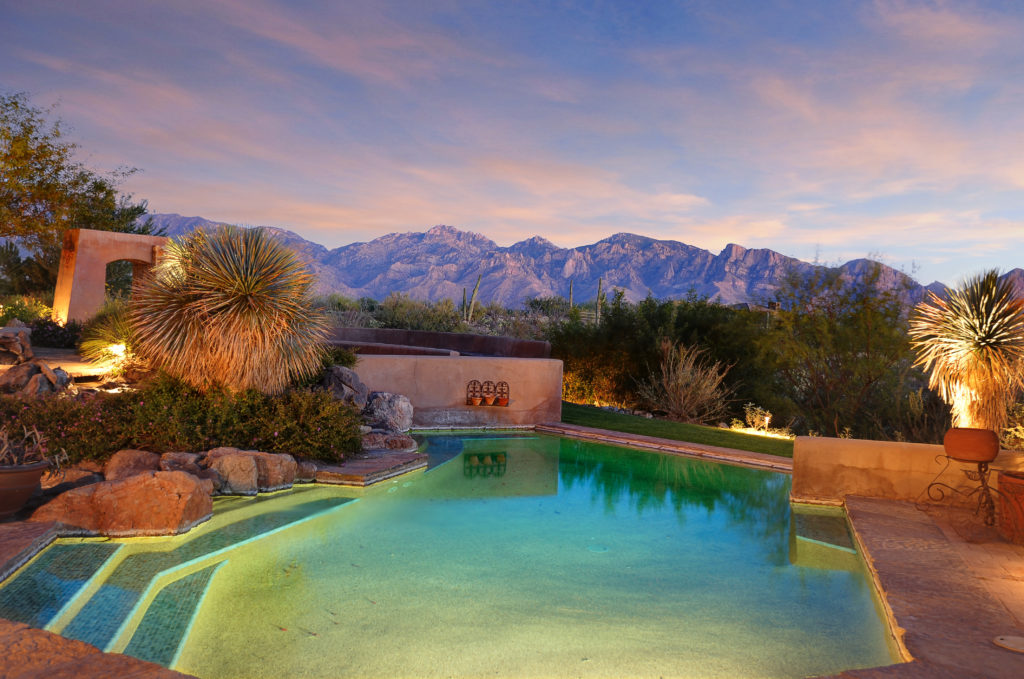
It’s that time of year again – time to get the pool in shape for the summer season! Below are some quick tips to help ensure that your swim season gets off to a great start.
- Look around and check for signs of leaks in the plumbing, wetness around the pump motor or on the concrete pad.
- Make sure you have good circulation of water in your pump basket – it should be filled with water.
- Test your water for the level of total dissolved solids (TDS), such as calcium, in the water to determine whether you need to drain and refill your pool. Arizona’s water is so “hard” (laden with calcium and minerals) that the buildup can prevent your pool chemicals from doing their job. In some cases, the TDS levels are so high that a pool needs draining and refilling with clean water that will respond to the chemicals in appropriate amounts. Pools usually need to be drained every three to five years, as TDS levels get high over time.
- If your pool is salt-chlorinated, check salt levels and clean the cells regularly, especially if the salt system stops producing when the weather cools off (most stop automatically at about 55 degrees). Raise the chlorine level above 5.0. The shock will oxidize “dead” material that the chlorine has killed, such as bacteria and algae.
Once you have checked your pool for leaks and have the chemicals in order, it’s just as important to maintain its upkeep.
- If you don’t have a pool service, devote time every week to a thorough cleaning of the pool, which involves netting out the debris, vacuuming, brushing the pool down, emptying the skimmer and pump baskets, and chemically treating the water. A great helper is an automatic pool cleaner.
- Most likely your pool pump runs all year, so maintenance on it should be ongoing.
- Inspect the strainer basket regularly for cracks, which can let debris pass through.
- It is also important to maintain the chemical balance in addition to cleaning filters every few months depending on the filter size and environmental surroundings.
- Finally, have the tile cleaned of the heavy calcium build up every few years. Algae sometimes grows underneath the scale and can cause problems in the pool.
The best things to do to solve the majority of problems are:
- Keep fresh water in the pool.
- Make sure filters are clean.
- Make sure there is good water circulation in the pool.
- Make sure chemicals are balanced.
- Run the filter for a long period of time at higher speed if you have a variable or dual speed motor.
Read other blog posts about home maintenance tips:
March 2nd, 2017
“I don’t feel like much of anything. It all seems so repetitive. Not enough variety.”
That was Stephen’s response to my text about what I should get for dinner that night. Great. Cooking vegetarian dinners (my requirement) that two adults and two kids will eat just got harder, so when I heard an advertisement for Blue Apron on a Podcast the following week, including a code to get “three meals free on your first order,” I was sold.
Note: Blue Apron calls a serving a “meal,” so three free meals is really the equivalent of three servings, and there are 6-12 servings in a weekend package depending on how you order. Tricky. Basically I got $30 off of a $60 order.
How does it work?
Blue Apron sends you the recipes and all of the ingredients necessary to cook three meals per week. They have a 2-person plan and a 4-person plan, but the vegetarian option is only available for the 2-person plan, so I set up our first delivery for a weekend when we wouldn’t have the kids. You can have the meals delivered on a Thursday, Friday, or Saturday, and they arrive on your doorstep in a large box with ice packs in the bottom to keep the ingredients cold.
 The first round of recipes were very time intensive, and they called for a lot of ingredients I had never used before, so the recipes on paper did not look particularly appealing to us. I called up to Stephen after over an hour of prep including finely chopping what felt like an unending pile of vegetables, and announced, “I don’t care if you like it or not, you’re eating it! This is taking forever!” The first round of recipes were very time intensive, and they called for a lot of ingredients I had never used before, so the recipes on paper did not look particularly appealing to us. I called up to Stephen after over an hour of prep including finely chopping what felt like an unending pile of vegetables, and announced, “I don’t care if you like it or not, you’re eating it! This is taking forever!”
In the end, all three of the recipes turned out to be very good. We were especially impressed with the taste of the fresh pizza dough, and the dumplings were amazing. Each recipe created closer to three servings rather than two, so we had leftovers. Seriously, the portions are huge, even for ultrarunners.
At this point, I cancelled all future deliveries (as far in the future as was possible at that time), not wanting to spend the full $60 anytime soon, but when I started getting the recipes emailed to me each week, as a teaser for the following weekend, I thought, why not just make them myself? Do I really need to pay $60 to have someone send me the ingredients? I mean, I have to spend over an hour in the kitchen to make it either way, so what am I paying for? Thus was born the following experiment.
DIY Blue Apron
 First I took the three emailed recipes and manually entered them into my Pepperplate account online to make shopping for the ingredients easier. The Pepperplate app automatically creates a grocery list organized by department based on the recipes you would like to make from your library. This is just one of its many benefits. I also pull the recipe up on an iPad to follow while I’m cooking. Although entering the recipes into my account will save me time if I ever make them again, it cost me 15 minutes at this point. First I took the three emailed recipes and manually entered them into my Pepperplate account online to make shopping for the ingredients easier. The Pepperplate app automatically creates a grocery list organized by department based on the recipes you would like to make from your library. This is just one of its many benefits. I also pull the recipe up on an iPad to follow while I’m cooking. Although entering the recipes into my account will save me time if I ever make them again, it cost me 15 minutes at this point.
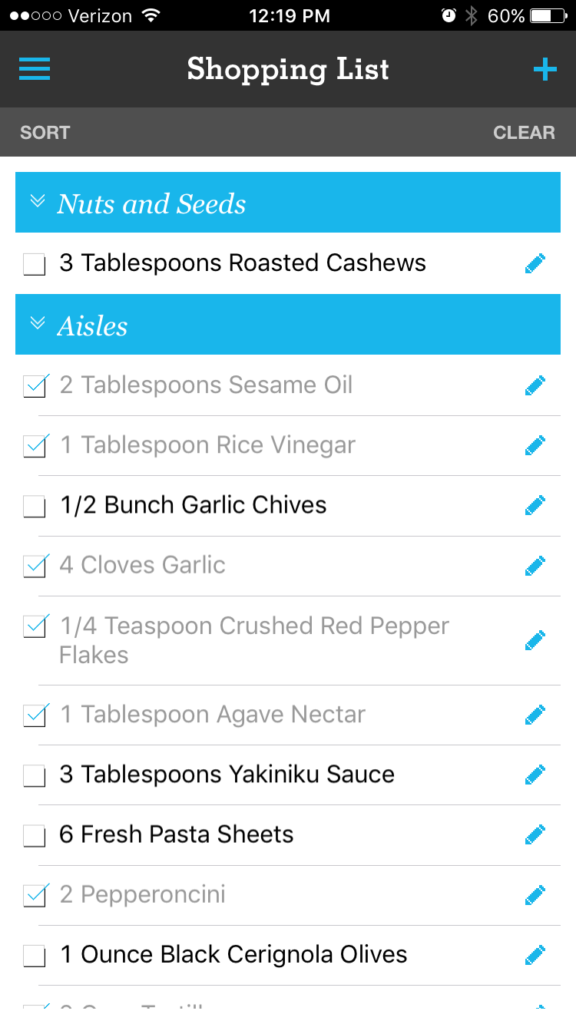 I went to my neighborhood grocery store first, Safeway, and ended up finding everything on my list except for seven items. I spent $55. Okay, fine, there will be leftovers of a lot of the ingredients, so I’m sure it will work out. I went to my neighborhood grocery store first, Safeway, and ended up finding everything on my list except for seven items. I spent $55. Okay, fine, there will be leftovers of a lot of the ingredients, so I’m sure it will work out.
Then I went to the nearest Sprouts and found two of the remaining seven ingredients: Roasted Cashews (just the right amount from the bulk bins) and Semi-Pearled Farro. It didn’t say “semi-pearled,” but here’s where my “stick to the recipe exactly for the sake of science” mentality started to fall apart. I just spent another $6.50, and it would have been $12.60 if I had bought Agave Nectar (which I had plenty of already), but there will be lots of this farro stuff leftover, so it’s okay, right?
Since Whole Foods was just down the street, I decided to attempt the last five ingredients there, even though I prefer to spend my money wisely. Nope. They didn’t have a single thing I was looking for. This further solidified my opinion that it’s unnecessary to shop at “Whole Paycheck.” I wasted five minutes there but at least was impressed by the great music. Stevie Wonder’s “Superstition” and Cutting Crew’s “I Just Died in Your Arms” had me bopping and mumble-singing through the aisles while I shook my head in disappointment.

With all the ingredients necessary to make one of the three dishes that night, I called it a day and went home, determined to find the other five tomorrow. I had spent $62 and almost two hours of shopping/driving at this point.
When I got home, I got an email saying that Blue Apron had just shipped my next box! @#$%! Now I was about to have six recipes to make! Remember how I had cancelled future shipments as far in the future as was possible at that time? I’ve since set a reminder in my phone to prevent this from happening again.
The next day I tried AJ’s fine foods and still couldn’t find the last five ingredients. I could have travelled even further to an Asian foods market, but I decided to do the smart thing and look up substitutes.
I ended up with the following from Safeway:
-Rabe Broccoli instead of Gai Lan
-regular Chives instead of Garlic Chives
-Teriyaki Sauce instead of Yakinuku Sauce
-Boxed Manicotti instead of Fresh Pasta Sheets
-Black Cerignola Olives were eliminated. This was to top a salad, and I knew my patrons would not appreciate them, especially since at this point, I was going to have to make two of the six recipes on nights with the kids. I also wished I had not purchased the Red Pepper Flakes or Pepperoncinis the day before, since those would definitely not be going in a kid meal anytime soon. The escapade to AJ’s and then Safeway cost me another hour and $8.50, so now we’re at 3 hours of shopping and $76 of ingredients.
Tips for following their recipes
 The three recipes which included my substituted ingredients all turned out fine, and in the process I nearly halved the time it took to make a Blue Apron recipe by doing the following: Don’t follow the recipe. I mean DO follow the recipe, but just don’t do the steps in order necessarily. Blue Apron has you chop up EVERYTHING in the first step, so you find yourself drowning in tiny bowls filled with chopped vegetables, wishing you had six arms and a Xanax and THEN you start cooking. The three recipes which included my substituted ingredients all turned out fine, and in the process I nearly halved the time it took to make a Blue Apron recipe by doing the following: Don’t follow the recipe. I mean DO follow the recipe, but just don’t do the steps in order necessarily. Blue Apron has you chop up EVERYTHING in the first step, so you find yourself drowning in tiny bowls filled with chopped vegetables, wishing you had six arms and a Xanax and THEN you start cooking.
Instead, start with Step 2, which is where things actually start to happen. Just prep the ingredients necessary for Step 2, get it going, and then check out Step 3. Basically, prep the ingredients as needed. You will have plenty of time to prep the next set of ingredients while the current set boils, bakes, simmers, etc. The way they lay out their recipes is highly inefficient, but if you can stay focused and maybe cross things off as you do them, you’ll save yourself a lot of time.
Another tip: Get your Olive Oil, Salt, and Pepper (not provided) out and leave them out the whole time. You will be adding salt and pepper “to taste” after seemingly every step.
How’s the food?
At this point we have had nine Blue Apron meals, and they have ranged from good to excellent. Who knew mixing Pistachios, Meyer Lemon juice, Pecorino Cheese, Castelvetrano Olives, and Sweet Piquante Peppers together could make such a delicious topping? (sounded gross to me) I’m impressed with the variety and quality of the ingredients and the tasty flavor combinations. Stephen seems to have been hoping for the next great thing that he could eat night after night, and that didn’t happen, but we have discovered quite a few new great dishes to break up the monotony of dinner.
The kids loved the salad made from Romaine Lettuce, Meyer Lemon, Parmesan Cheese, Mascarpone Cheese, and Olive Oil (the one I left the olives and pepperoncinis out of). I’ve never seen a 6-year old or an 8-year old so excited for salad before. We had a “tasting party” with small portions each of six different leftovers, and they approved of about half of them. That’s an incredible batting average for baseball as well as for feeding children.
Conclusion: Is Blue Apron Worth It?
In total I spent $76 buying the ingredients for three recipes and three hours looking for them. I could have cut that time way down though if I had skipped Whole Foods and AJ’s and gone straight to substitutes, but the unique ingredients are part of the appeal of Blue Apron. Another major drawback of buying my own ingredients is that there was a total of almost $48 of leftover ingredients, some of which is perishable and will end up in the compost. Of course, this experiment assumed I didn’t have anything that I needed so I had to buy it all up front, and next time I will already have things like Sesame Oil, Rice Vinegar, and Farro on hand (although I still don’t know if it’s “semi-pearled”).
So, is Blue Apron worth it? If you want more variety in your dinners without spending a ton of time looking for recipes and special ingredients, then yes, I think so. My plan is to have a weekend package sent to me every couple of months and then make the best of those recipes on my own in the future. Sure I could just search for recipes online, but the likelihood that I would have made any of these recipes on my own accord due to their “unique” ingredients is slim. Let Blue Apron push your taste buds to new limits!
You can see the breakdown of costs and leftover ingredients in spreadsheet form here.
|
Client Testimonials"Angela was truly a pleasure to work with. She made a difficult, emotional process for me so much more pleasant and we were able to sell and close quickly. Thank you Angela and Long Realty!" -Lynda View More Testimonials |

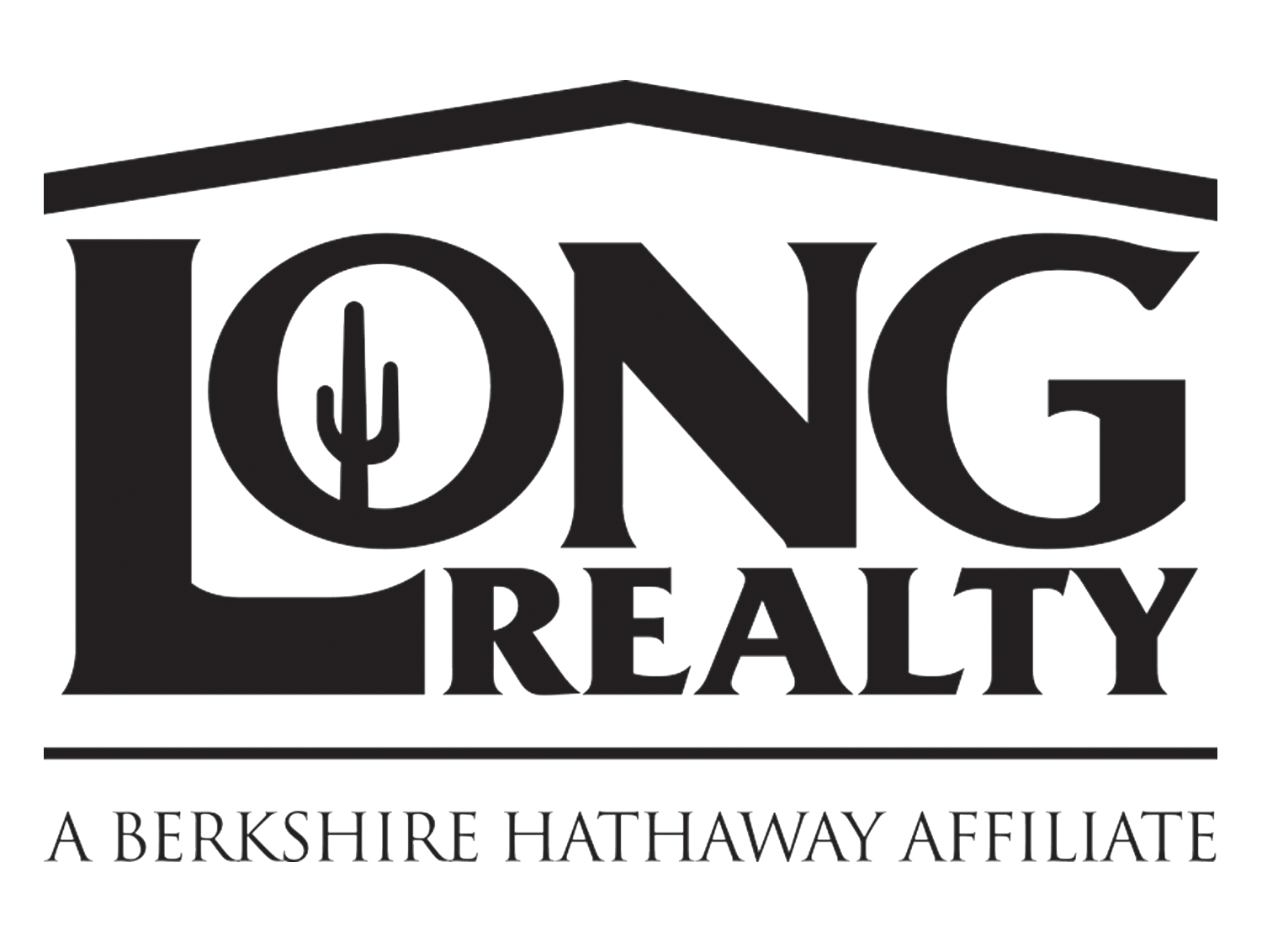

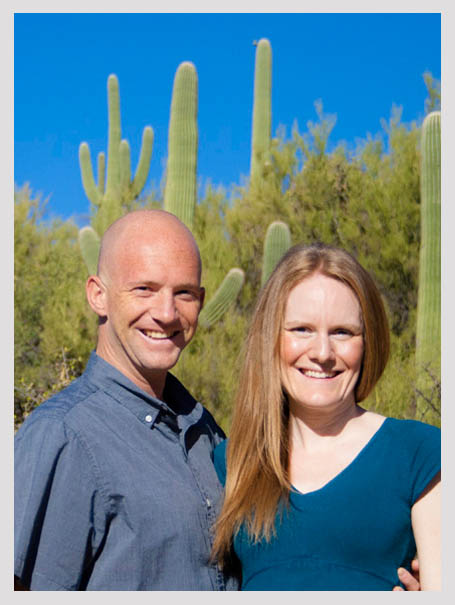





 I went to my neighborhood grocery store first, Safeway, and ended up finding everything on my list except for seven items. I spent $55. Okay, fine, there will be leftovers of a lot of the ingredients, so I’m sure it will work out.
I went to my neighborhood grocery store first, Safeway, and ended up finding everything on my list except for seven items. I spent $55. Okay, fine, there will be leftovers of a lot of the ingredients, so I’m sure it will work out.



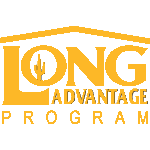

Connect With Us!